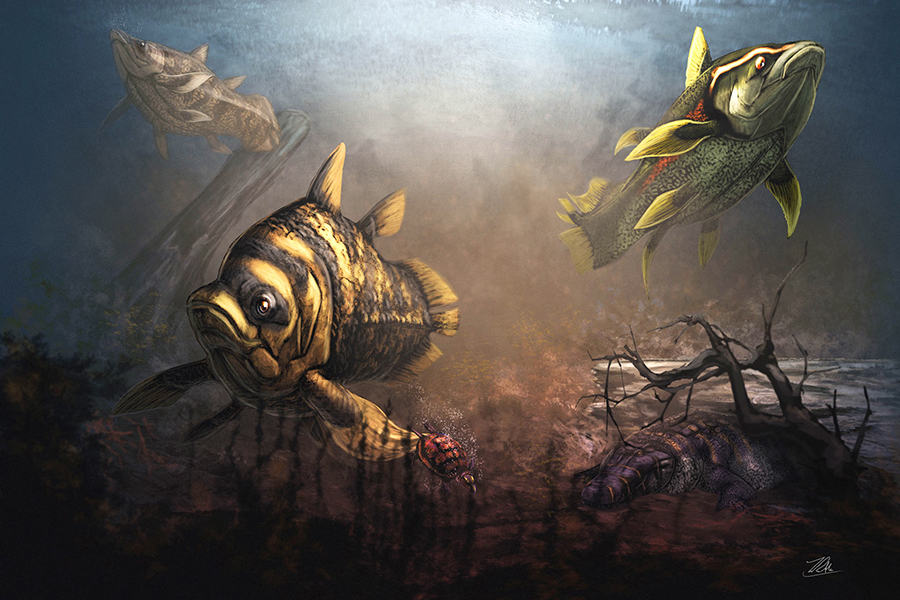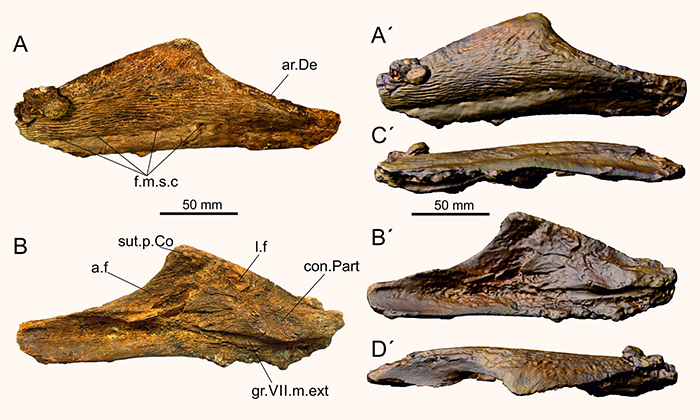Fossils of Cretaceous-Period Coelacanth Discovered in Texas

The fossils are estimated to be around 96 million years old and belong to the first Cretaceous mawsoniid coelacanth from North America.
Coelacanths are a group of large lobe-finned fish (sarcopterygians) closely related to tetrapods.
They were thought to have been extinct for 66 million years, until a first living specimen was caught fortuitously in South Africa in 1938.
Coelacanths first appeared in the Early Devonian epoch, diversified a little in the Devonian and Carboniferous period, and attained a maximum of diversity in the Early Triassic.
During the Cretaceous, they are known by two families only, the Latimeriidae, which survived to the present with the genus Latimeria, and the Mawsoniidae, which went extinct at the end of the Cretaceous.
“Today, the only living genus of coelacanth, Latimeria is represented by two species along the eastern coast of Africa and in Indonesia,” said Dr. Lionel Cavin from the Department of Geology and Palaeontology at the Natural History Museum, Geneva, and his colleagues.
“This sarcopterygian fish is nicknamed a ‘living fossil,’ in particular because of its slow evolution.”
“The large geographical distribution of Latimeria may be a reason for the great resilience to extinction of this lineage, but the lack of fossil records for this genus prevents us from testing this hypothesis.”

The newly-described coelacanth specimens were recovered from two localities of the Woodbine Formation in northeast Texas.
They belong to a previously unknown species of mawsoniid coelacanth in the genus Mawsonia.
This fresh, brackish water fish had a total body length of 1.5 m (4.9 feet) and lived during the Late Cretaceous epoch, some 96 million years ago.
“The Texan discovery of Mawsonia sp. adds an important new component to the Woodbine vertebrate fauna,” the paleontologists said.
“It is an unexpected Gondwanian representative in this Appalachian assemblage with predominantly Laurasian (European and Asian) affinities.”
“It considerably increases the geographical distribution of this genus, and confirms its occurrence at the beginning of the Late Cretaceous epoch.”
The findings were published online in the journal PLoS ONE.
_____
L. Cavin et al. 2021. The first late cretaceous mawsoniid coelacanth (Sarcopterygii: Actinistia) from North America: Evidence of a lineage of extinct ‘living fossils’. PLoS ONE 16 (11): e0259292; doi: 10.1371/journal.pone.0259292
Source: www.sci-news.com/








